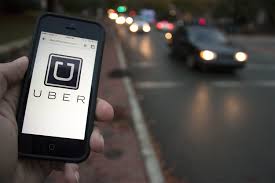 Most folks are aware of the high-profile class-action suits against Uber and Lyft. The two companies’ drivers – independent contractors – are claiming they should be classified as employees. In Uber’s settlement, it retained the right to classify the drivers as independent contractors while amending some of its policies, changing the nature of the relationship to look more like an employer/employee model in some respects. The case is interesting in that it presages a possible third category of workers that share characteristics of both employees and independent contractors. It has been suggested that American labor law is due for such modifications to bring it out of the 20th century. With the rise of the “gig economy,” some such changes are probably inevitable. Another interesting result of the agreement was the formation of the Independent Drivers Guild, an association affiliated with a regional branch of the International Association of Machinists and Aerospace Workers union (IAM). The alt-labor agreement provides for the association for a five-year period, during which time the union has promised to refrain from trying to unionize drivers, from encouraging them to strike and from waging campaigns to have them recognized as employees rather than independent contractors (although the union maintains the right to attempt to organize at any time the workers are reclassified as employees). In the meantime, traditional employers should be reminded that the law favors workers being classified as something other than independent contractors. You should review any relationships with workforces not classified as employees and contracts with third-party workforce providers.
Most folks are aware of the high-profile class-action suits against Uber and Lyft. The two companies’ drivers – independent contractors – are claiming they should be classified as employees. In Uber’s settlement, it retained the right to classify the drivers as independent contractors while amending some of its policies, changing the nature of the relationship to look more like an employer/employee model in some respects. The case is interesting in that it presages a possible third category of workers that share characteristics of both employees and independent contractors. It has been suggested that American labor law is due for such modifications to bring it out of the 20th century. With the rise of the “gig economy,” some such changes are probably inevitable. Another interesting result of the agreement was the formation of the Independent Drivers Guild, an association affiliated with a regional branch of the International Association of Machinists and Aerospace Workers union (IAM). The alt-labor agreement provides for the association for a five-year period, during which time the union has promised to refrain from trying to unionize drivers, from encouraging them to strike and from waging campaigns to have them recognized as employees rather than independent contractors (although the union maintains the right to attempt to organize at any time the workers are reclassified as employees). In the meantime, traditional employers should be reminded that the law favors workers being classified as something other than independent contractors. You should review any relationships with workforces not classified as employees and contracts with third-party workforce providers.




